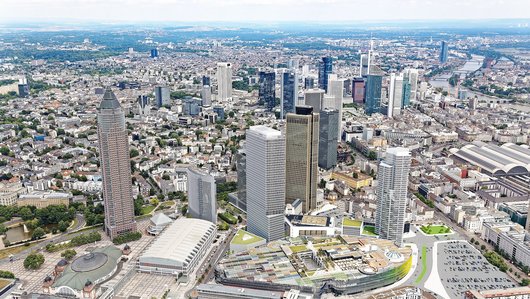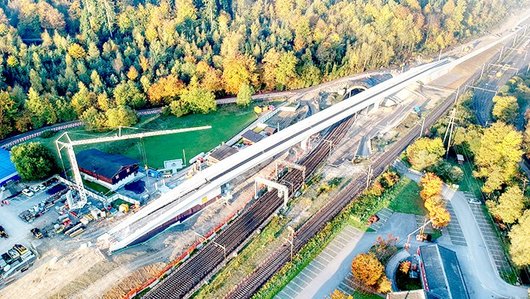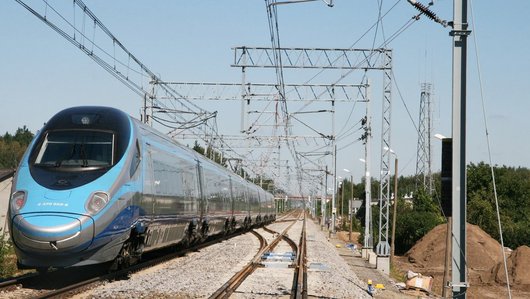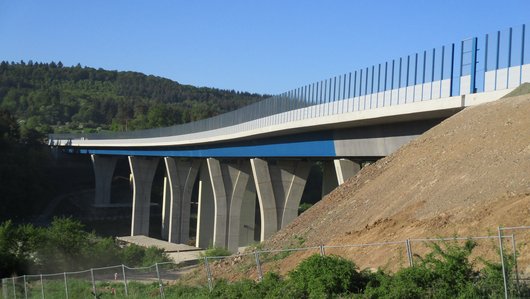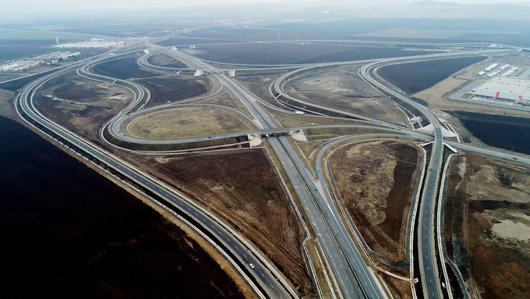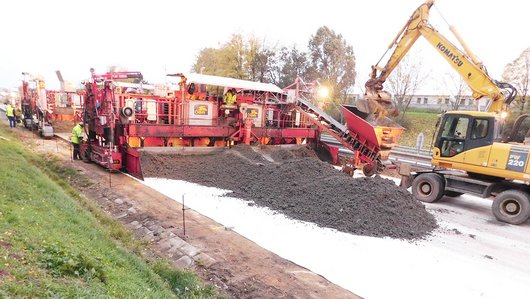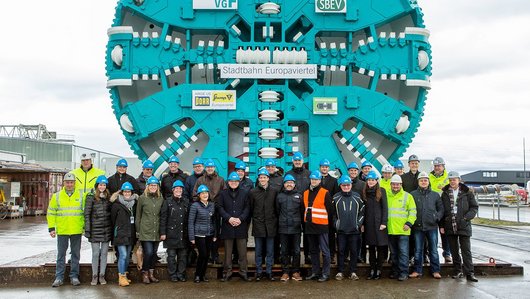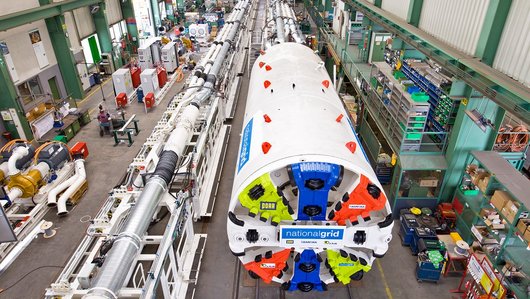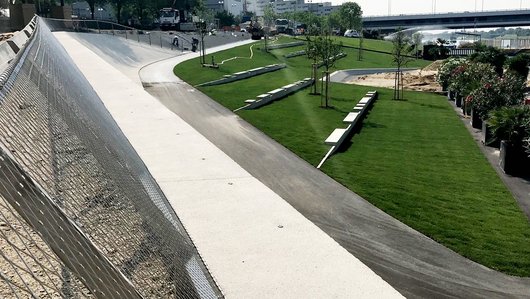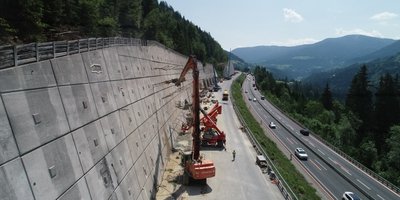
Renovating the Hochmais and Frauenegg anchor walls
PORR is working alongside the A10 Tauern Motorway to bring two aging anchor walls up to date with the latest technology, and thus guarantee improved safety.
PORR is installing 10,000m of anchors in the Hochmais and Frauenegg anchor walls. The project is particularly challenging as it involves working at heights of up to 20m and dealing with diverse bedrock conditions.
-
EmployerASFINAG Bau Management GmbH
-
ContractorPORR Bau GmbH . NL Salzburg; PORR Bau GmbH . Spezialtiefbau
-
Order typeBaumeisterleistungen
-
Project typeInfrastructure/specialist civil engineering
-
Project scopeDrilling anchor holes and fabricating pilaster strips
-
Order volumeEUR 15m
-
Construction start04/2019
-
Construction end09/2021
Background information
A number of structural defects were identified in the course of a 2016 structural survey of the 40-year-old walls along the A10 motorway. The Hochmais and Frauenegg anchor walls, located between the Pongau and Hüttau motorway junctions, were no longer in a condition to meet modern technical requirements. In spring 2019, ASFINAG Bau Management GmbH contracted PORR to renovate the old anchor walls. The project involved installing new grouted anchors in the form of prestressed permanent strand and bar anchors. This meant first building reinforced concrete pilaster strips in the anchor walls, to strengthen the wall and transfer the prestressing forces from the anchor through the wall to the bedrock. In order to maintain the important north-south transit link during the works, traffic in both directions was funnelled into just one carriageway and separated by traffic safety measures.
Prerequisites and challenges
When the anchor walls were constructed in the seventies and eighties, the slopes and valleys were cut into step by step, and anchored on each new level using crawler drill rigs. Now, however, the anchoring work would need to be done at heights of up to 20m – a fresh challenge. Special equipment would be required to install the anchors as planned.
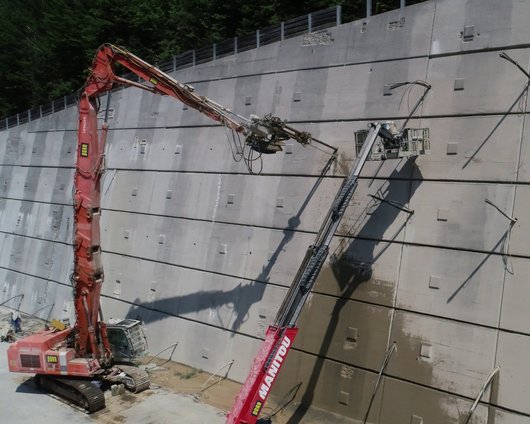

Hochmais and Frauenegg
PORR installed the new anchors on the 25m high Hochmais anchor wall at three levels. The bottom level was installed using a crawler drill rig, while a 60t excavator with a carriage attachment on its arm was used to drill the anchor holes in the higher levels at heights of up to 20m. The mechanical installation followed safely using an anchor dispenser. Altogether, 167 permanent strand anchors were installed on the Hochmais anchor wall – 4,615m of anchors in total. The individual anchors are up to 36m long with a breaking load of 2,790kN.
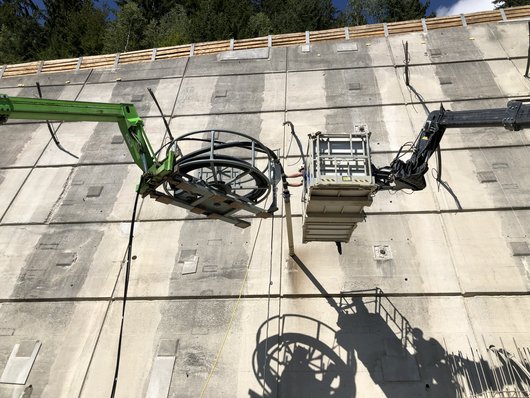

The new anchors in the 11m high Frauenegg anchor wall were installed on two levels. As before, the crawler drill rig was used for the lower level, and two 20t excavators with carriage attachments were used to reach the higher level at 9m. The anchor dispenser came back into action for the strand anchors, while the bar anchors were installed with an I-beam specially constructed by PORR. Altogether, 234 permanent strand and bar anchors were installed on the Frauenegg anchor wall – 5,023m of anchors in total. The individual anchors are up to 26m long with a breaking load of 2,232kN.
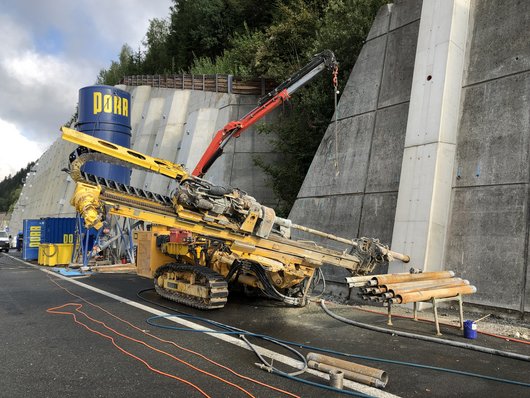

We carried out the drilling work using a double rotary drilling procedure. In this procedure, two separate rotary drives are used to drill the casing and auger into the bedrock.
Drilling and concreting
The PORR team used a double rotary drilling procedure. In this procedure, two separate rotary drives are used to drill the casing and auger into the bedrock. The casing supports the drilled hole, while the auger, tipped with the boring head, travels slightly ahead to rotate and break up the bedrock. The loose material is then flushed out of the drilled hole with air and water. In the ‘right-left’ system, the casing rotates anti-clockwise and the auger clockwise to ensure a good drilling performance. Once the anchors had been installed, the drill holes were filled with cement grout. The following day, the grout was injected into the bond using a high-pressure process. This holds the anchor in the bedrock. The grouting process was repeated until the required retaining pressure was reached. The vertical pilaster strips on the Hochmais anchor wall were concreted after the anchor holes had been drilled; on the Frauenegg wall, some were concreted beforehand. In order to ensure that the pilaster strips had sufficient concrete strength to prestress the anchors, it was essential to wait the full hardening time.
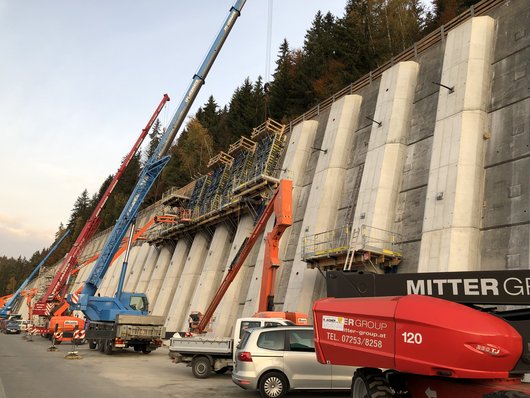

Rock and scree
The bedrock of the slopes being supported by the anchor walls varied widely. The team mostly encountered weathered, broken up rock when drilling the anchor holes for the Hochmais wall. Apart from the final few metres of drilling, this was not stable enough to create drill holes without casing and over 90% of the drill lengths had to be cased. The Frauenegg anchor wall is located in front of a vast scree slope, which also required cased drill holes. When grouting the holes, larger volumes of cement grout were taken up by loose sediment than the planners had anticipated.
We are installing anchors and extensometers with a total length of over 10,000m at heights of up to 20m.
Monitoring and safety
Measurement cross-sections were built to facilitate continuous monitoring of the anchor walls. Force plates were installed so that potential changes to the anchor forces can be identified quickly, while extensometers measure any movement in the walls. Six measurement cross-sections were built in the Hochmais anchor wall, comprising seventeen force plates and twelve extensometers, with a total length of 410m. The Frauenegg anchor wall has nine measurement cross-sections comprising fifteen force plates and thirteen extensometers, with a total length of 350m.
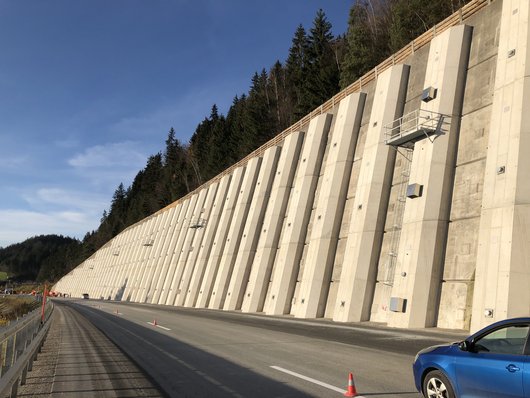

Outlook
There are 3,000 anchors to install in the second section, located beneath a bridge structure and between the anchor wall and bridge framework. The 8m high anchor wall is located between the Villach and Salzburg carriageways, supporting the Salzburg carriageway foundation. The construction site lies beneath a 300m long suspension bridge. The overtaking lane for the Villach carriageway has been closed for use of the construction site and is used for transporting material. The third renovation section is below the Donnergraben Bridge, where PORR is renovating the bridge abutments in both directions and the column base supports. Some 22,000m of anchors will be installed here in the period from September 2020 to September 2021. This section is unusual due to the fact that some of the anchors will be over 110m long.
Technical data
-
Anchor length installed in the Hochmais anchor wall4615m/167 permanent strand anchors
-
Anchor length installed in the Frauenegg anchor wall5023m/234 permanent strand/bar anchors

